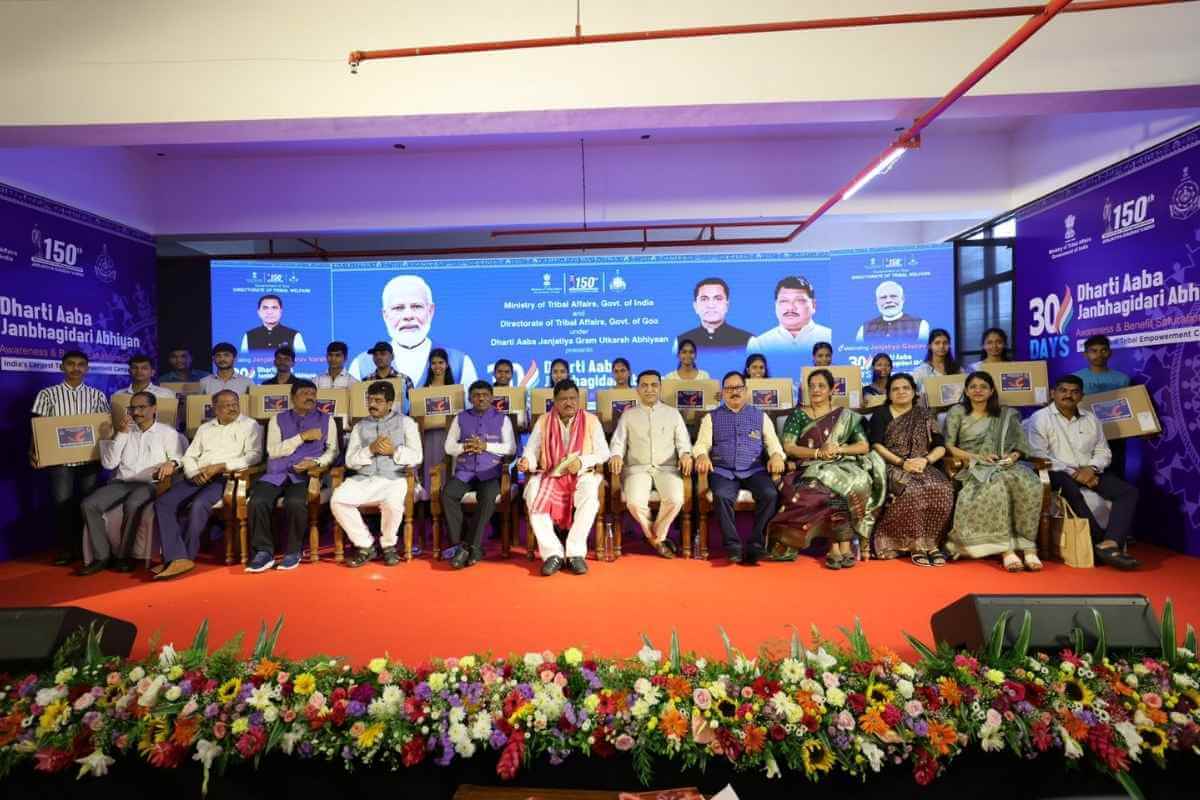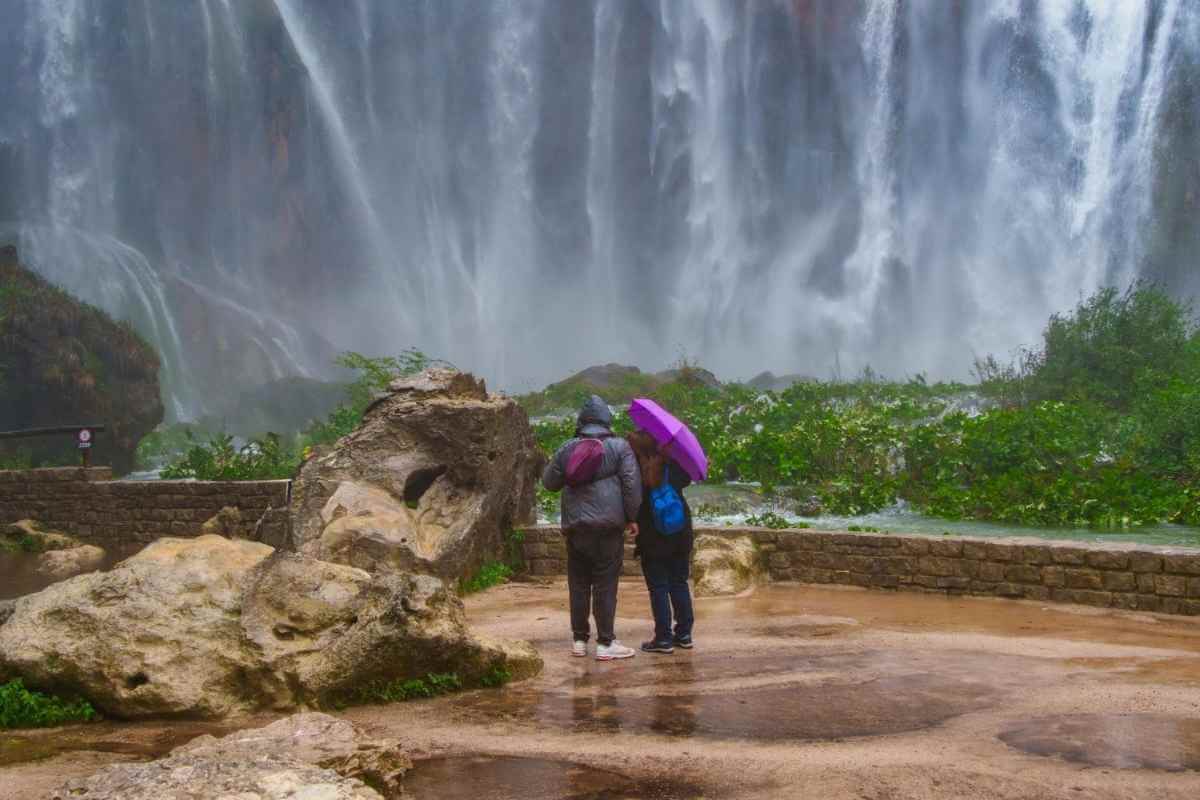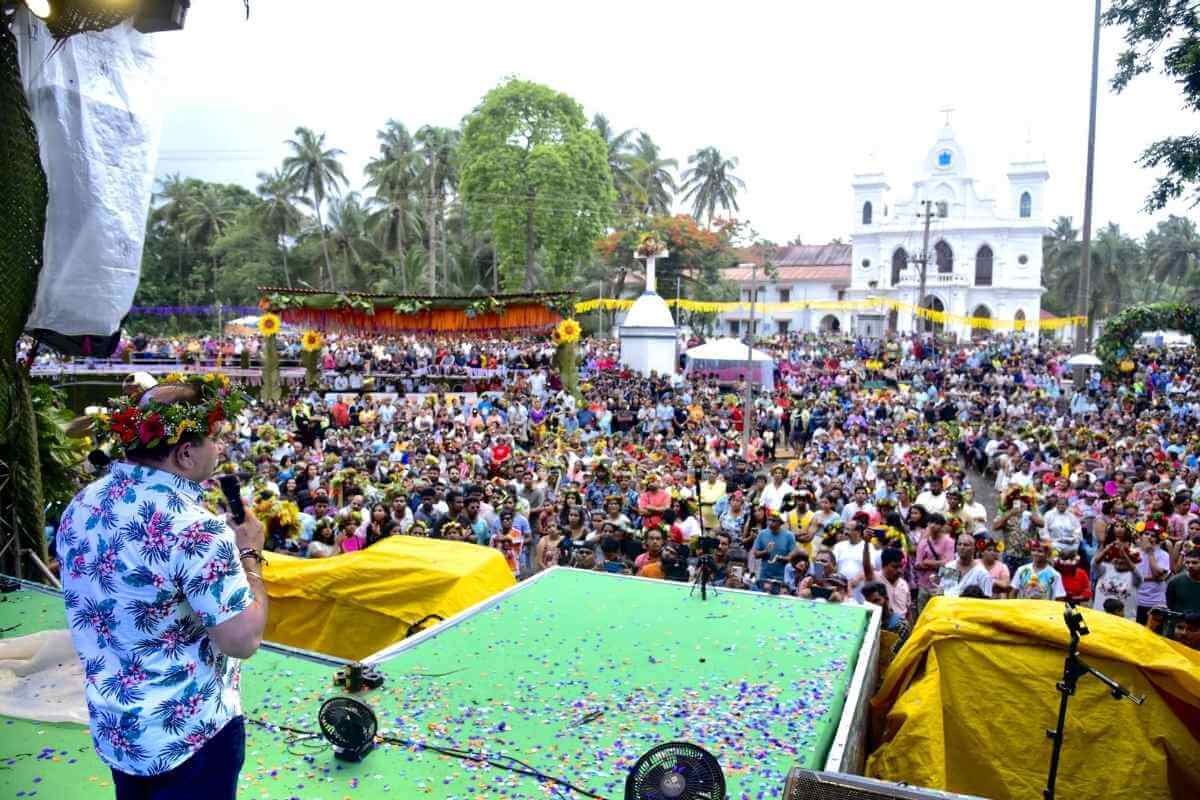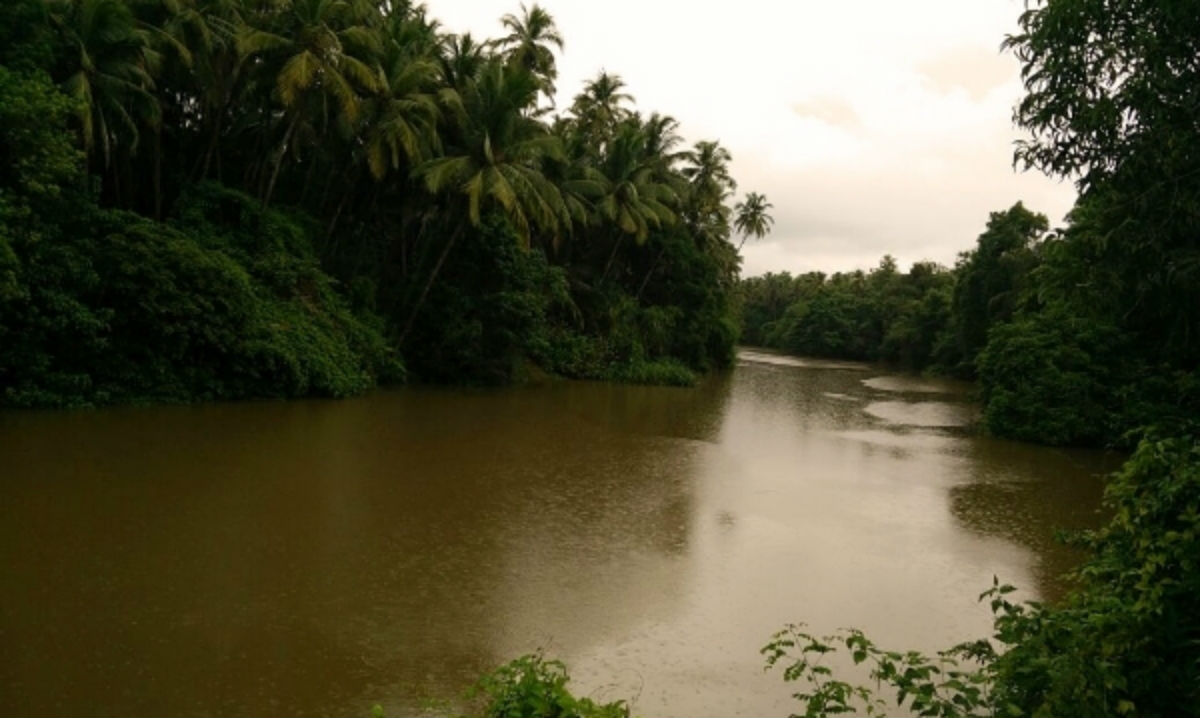Goa, renowned for its immaculate beaches, lively culture, and lush surroundings, is currently moving toward a more sustainable future. E-friendliness has become increasingly crucial as worries about climate change and environmental damage increase. Examining Goa’s eco-friendly programs, behaviours, and attractions in this context not only provides insight but also serves as an example for other areas to emulate. Goa emerges as a model of sustainable practices, where the preservation of its natural beauty and cultural history takes primacy, as worries about the health of the globe grow more pressing. This article goes deep into Goa’s eco-friendly core, revealing the countless efforts, thoughtful decisions, and peaceful coexistence that are paving the way for future generations to lead greener, more responsible lives.
1. Sustainable Tourism Practices
Goa’s use of sustainable tourism practices marks a significant change in how the area engages with its environment, culture, and visitors. This strategy aims to achieve a delicate balance between developing tourism and making sure Goa’s ecosystems and communities are sustained over the long term. Goa seeks to reduce negative effects on its natural and cultural resources while enhancing positive contributions through the introduction of sustainability concepts into the tourism industry.
- Responsible visitor management: Responsible visitor management is essential for eco-friendly tourism in Goa to avoid overpopulation and the deterioration of sensitive ecosystems. Goa makes sure that its natural resources are preserved for future generations by actions including limiting access to popular sites, regulating tourism seasons, and promoting less-traveled regions.
- Conservation of Wildlife and Natural Habitats: The preservation of Goa’s various ecosystems is a top priority for eco-friendly tourism. Visitors have the chance to both appreciate and help preserve the state’s abundant biodiversity through wildlife sanctuaries, mangrove conservation initiatives, and guided eco-tours.
- Low-Impact Activities: The tourist activities in Goa are geared toward non-intrusive ways to take in the natural beauty of the island. Visitors can get a close-up look at the area while leaving the least amount of environmental impact by participating in guided nature walks, bike tours, and kayaking excursions.
- Recycling and trash Reduction: Eco-friendly tourist activities include trash management tactics that reduce the use of plastic, support recycling, and coordinate routine beach clean-ups. The natural beaches and marine habitats of Goa are protected through these initiatives.
Goa’s Potential for Sustainable Tourism Practices
- Ecotourism Haven: Goa is a haven for ecotourism thanks to its varied habitats, from the Western Ghats to its unspoiled coastline. The state can attract tourists while preserving its natural beauty by encouraging guided nature walks, animal viewing, and responsible hiking.
- Community Engagement: The vibrant cultural legacy and tight-knit communities of Goa offer chances for really immersive cultural encounters. Participating in regional celebrations, customary crafts, and neighborhood-based projects can promote intercultural understanding and strengthen local economies.
- Mobility Alternatives: Introducing green mobility options, including electric cars and cycle lanes, can lessen traffic congestion and carbon emissions while also improving the entire visitor experience.
- Sustainable Festivals and Events: Working with festival and event organizers to ensure eco-friendly practices can reduce environmental consequences while providing tourists with distinctive experiences.
- Eco-Friendly Accommodations: Goa may adopt sustainable lodging that reduces energy use, reduces waste, and prioritizes eco-friendly amenities, from boutique eco-resorts to homestays. Programs for certification can encourage businesses to follow green guidelines.
Goa’s adoption of sustainable tourism techniques not only demonstrates its dedication to protecting its natural and cultural resources but also serves as an example for other travel destinations throughout the world. A model for a cleaner and more sustainable travel business, responsible tourism works in concert with environmental protection, community involvement, and cultural preservation to guarantee that Goa’s appeal remains.
2. Green Accommodations
The astonishing evolution of Goa’s hospitality industry is at the core of the state’s transformation into an eco-friendly state. To redefine how visitors experience this coastal sanctuary while leaving a kinder ecological impact, the idea of “Green Accommodation” has gained traction. In addition to providing a comfortable place to stay, these eco-friendly lodgings support sustainable practices that align with the state’s dedication to environmental protection and ethical tourism.
- Solar-Powered Retreats: Goa’s eco-friendly lodgings use the region’s plentiful sunshine to run their businesses. Rooftops are adorned with solar panels that transform sunshine into clean energy used to run heaters, lights, and appliances. This strategy not only lowers carbon emissions but also shows how we may live in harmony with the environment.
- Harvesting rainwater: Given Goa’s tropical climate, water conservation is a top priority. Rainwater harvesting systems are now a common feature in eco-friendly lodgings. These systems capture and store rainwater for use in irrigation and toilet flushing, among other things. This method lessens dependency on local water supplies and mitigates water scarcity.
- Energy-Efficient Infrastructure: In environmentally friendly lodgings, sustainable architecture takes center stage. The demand for air cooling and heating is reduced through energy-efficient designs, natural ventilation, and insulating materials, which lowers energy consumption and improves visitor comfort.
- Initiatives for Responsible Trash Management: Goa’s eco-friendly hotels promote ethical trash management. They put a high priority on waste segregation, recycling, and composting to ensure that most of the trash produced is kept out of landfills. This dedication serves as an example for both visitors and the neighborhood.
Goa’s Potential for Green Accomodation
The potential for green lodging in the state is a game-changing chance to provide visitors with more than just a place to rest but also an immersive experience that is in line with sustainable values.
- Integration of Renewable Energy: Goa’s plentiful sunshine can be used to generate solar electricity, while the coastal breezes can be used to generate wind energy. When it comes to implementing renewable energy sources to reduce their carbon impact, green lodging may set the bar high.
- Water Conservation: Using water-saving techniques like wastewater treatment, effective plumbing systems, and rainwater collection can drastically cut water usage and help with resource management.
- Certification and Recognition: Goa’s green lodgings can apply for certifications from organizations like LEED or EarthCheck, giving ecologically aware tourists peace of mind and establishing standards for the sector.
- Research and Innovation: Collaborating with research institutes and groups can result in the creation of cutting-edge sustainable practices and a mindset of constant improvement.
The growth of eco-friendly lodging in Goa is an example of a forward-thinking mentality that places environmental responsibility at the center of the hospitality sector. These accommodations present a concept where luxury, comfort, and sustainability converge, appealing to travelers who are looking for immersive and responsible experiences.
3. Biodiversity in Goa
The state has started ambitious measures to conserve biodiversity because it understands how important it is to preserve this natural wealth. The importance of Goa’s commitment to preserving its ecological resources grows as the demands of development and tourism increase. The state works to strike a healthy balance between development and preservation through several conservation initiatives, protected areas, and community involvement.
Goa’s various landscapes are woven together in an enthralling tapestry by its biodiversity. A global hotspot known as the Western Ghats is home to endemic vegetation and uncommon species like the Malabar Pied Hornbill. Its mangroves provide a sanctuary for animals like the Smooth Otter and Mangrove Pitta, and its coastal waters are teeming with colorful parrotfish and other marine life. Unique species like the Goa’s Torrent Frog flourish in the rivers and streams. Malabar Nut and Gotu Kola are abundant medicinal plants, and the Indian Pitta and Paradise Flycatcher are favorites of birdwatchers. The diversity of Goa includes amphibians and reptiles, including species like the Goan Wrinkled Frog and Shieldtail Snake.
- Creating Wildlife Sanctuaries and Protected Areas: Goa is home to several wildlife sanctuaries and protected areas that serve as havens for various species. These protected areas, like Bondla Wildlife Sanctuary, Cotigao Wildlife Sanctuary, and Bhagwan Mahavir Wildlife Sanctuary, guarantee the conservation of threatened plant and animal species.
- Protection of Endangered Species: Goa places a high priority on safeguarding local, endangered species. The goal of conservation activities is to protect endangered species like the Indian gaur, black panther, giant squirrel, and numerous bird species by securing their habitats and deterring poaching.
- Mangrove and Wetland Conservation: Goa takes action to save these important habitats because it recognizes the biological importance of mangroves and wetlands. Additionally to preserving a variety of marine species, mangroves act as natural barriers against coastal erosion.
- Research and Monitoring Programs for Biodiversity: These initiatives help determine the condition and status of Goa’s biodiversity. Conservationists can create focused strategies to handle new concerns by analyzing ecological changes and population trends.
- Reforestation and Afforestation: Goa works on reforestation and afforestation programs to mitigate habitat loss and deforestation. These programs aid in restoring deteriorated habitats and establishing crucial animal circulation corridors.
- Awareness and Education: It is essential to inform the general people and tourists about the value of conserving biodiversity. Environmental stewardship is encouraged by environmental awareness programs, outdoor education facilities, and protected area visits.
Goa’s Potential for Biodiversity
- Restoration of Degraded Habitats: Wetlands, mangroves, and woodlands are only a few examples of the Degraded Habitats that can be Restored in Goa. These habitats can be revitalized and can support a wide variety of plant and animal species by implementing restoration efforts.
- Protected Areas Expansion: Goa can create safe havens for its distinctive flora and fauna by designating additional protected areas and efficiently managing those that already exist. Future generations can benefit from these ecosystems’ capacity to store biodiversity.
- Management of Invading Species: It’s critical to address the threat posed by invading species. Goa can prevent the spread of non-native species that can disturb regional ecosystems by implementing invasive species management initiatives.
- Wildlife Corridors: By creating greenways and wildlife corridors to connect fragmented habitats, species can migrate freely, promoting genetic variety and lowering the risk of population isolation.
- Native Plant Promotion: Promote the use of native plants in landscaping and urban development to help local wildlife, from birds to pollinators, by creating habitats that will benefit them.
4. Waste Management and Recycling
Waste management and recycling are proving to be essential cornerstones of Goa’s sustainable growth as the city’s pulsating tourism and development scene intensifies. The state is dedicated to protecting its pristine environment with cutting-edge waste management techniques and a growing recycling culture. The state’s landscape is graced by both verdant hinterlands and stunning coastline scenery.
- Effective Waste Collection and Segregation: Goa has made progress in ensuring that various forms of waste are segregated at the source of generation. The state creates the groundwork for efficient recycling by teaching citizens and visitors about responsible garbage disposal.
- Promotion of Recycling Centers: Citizens are invited to take an active role in the recycling process at the recycling centers that dot the Goan landscape. These facilities serve as collection points for recyclable items like paper, plastic, glass, and metals, preventing them from ending up in landfills and fostering their reuse.
- Incentives for Recycling: The introduction of incentives, such as deposit-refund programs for bottles and cans, motivates people to actively engage in recycling initiatives. These programs also instill a sense of accountability and provide financial incentives for waste minimization.
- Public Awareness and Education: Public awareness initiatives and educational initiatives are essential for modifying attitudes and routines. Goa sows the seeds for a greener future by teaching the next generation through schools and community activities.
Goa’s Potential for Waste Management and Recycling
Goa has the untapped potential to completely transform waste management and recycling techniques amidst its magnificent landscapes and vibrant culture.
- Infrastructure for Advanced Recycling: Goa has the ability to remove huge volumes of waste from landfills by building cutting-edge recycling facilities suited to handle a variety of materials, from plastics to electronic waste.
- Source Separation Programs: By putting in place efficient source separation programs at homes and businesses, you can increase recycling rates, lower contamination, and prevent recyclables from ending up in landfills.
- Waste-to-Energy Conversion: Goa may want to look at waste-to-energy technology that may turn non-recyclable waste into clean energy. This will help the state with its energy demands while lowering landfill waste.
- Public-Private Partnerships: By working together with private businesses and waste management specialists, it is possible to make use of resources and knowledge to develop comprehensive waste management solutions.
Goa’s enormous potential illuminates the way to lasting development. The state can not only protect its natural and cultural legacy but also set an example for sustainability on a global scale by embracing innovation, encouraging partnerships, and cultivating a shared vision for a greener future.
5. Community Involvement
Goa’s effort to become more environmentally friendly is driven by the potent force of citizen involvement. The state’s thriving communities are working together to create a future that is more ecologically sensitive and sustainable. Each community has its distinct cultural heritage, traditions, and goals. The people of Goa are playing a crucial part in establishing a peaceful coexistence between people and nature via cooperation, education, and shared responsibility.
- Local leaders and initiatives: Communities in Goa are launching grass-roots campaigns to promote sustainable lifestyles. These committed people are igniting change from the ground up, from local clean-up campaigns to cooperative organic farming. Moreover, Encourage local leaders to start neighborhood cleanliness programs and tree-planting efforts to demonstrate the power of group effort.
- Environmental Education: Schools and community organizations in Goa are increasingly becoming hubs for environmental education. Young and old inhabitants are taught the value of eco-friendliness and their part in preserving the region’s natural beauty through workshops, seminars, and awareness campaigns.
- Cultural Celebrations for Sustainability: Goa’s diverse cultural heritage provides a venue for honoring environmentally responsible behaviors. Festivals and events are increasingly including sustainability themes, highlighting the relationship between custom and ethical behavior.
- Online activism and social media: Digital platforms help groups communicate, exchange ideas, and organize for environmental causes. Online initiatives, informational drives, and virtual clean-up activities magnify neighborhood efforts and encourage wider participation.
Goa’s Potential for Community Involvement
- Grassroots Initiatives: Goa’s local communities can launch neighborhood cleanup drives, tree-planting initiatives, and waste-reduction programs, showcasing the tremendous impact of group action on enhancing local ecosystems.
- Community-based tourism: The people of Goa can provide visitors with genuine, immersive experiences that showcase local culture, customs, and sustainable lifestyles while bolstering the local economy.
- Collaborative Restoration Projects: To improve local ecosystems, communities can work together to restore damaged landscapes, plant trees, clean up waterways, and restore wildlife habitats.
- Advocacy and Policy Influence: Communities can voice their issues, offer answers, and influence legislation through collective lobbying to make sure environmentally friendly factors are incorporated into development plans.
Goa is a heartwarming example of how community involvement and environmental friendliness work together to develop a place. People are not only creating a greener Goa as they come together to conserve the area’s natural beauty, cultural legacy, and quality of life, but they are also providing a reassuring model for international sustainability initiatives.
6. Eco-Adventure and Recreation
Goa, which is tucked away between the scenic coastline and verdant hinterlands, attracts adventure seekers to discover its plethora of natural wonders through eco-friendly activities. Travellers are invited to interact with Goa’s breathtaking landscapes through eco-adventure and recreation, which encourages environmental awareness and conservation.
Eco-adventure and leisure act as a vibrant link between the natural world and the human experience. They give the following major advantages:
- Environmental Awareness: Getting up close and personal with nature helps people appreciate Goa’s different ecosystems more. This knowledge fosters a sense of obligation to protect the environment.
- Eco-adventure activities create tourism revenue while reducing adverse effects on the environment. This is known as sustainable tourism. By encouraging visitors to preserve and safeguard natural regions, this type of tourism ensures their continued existence.
- Health and Well-Being: Spending time outdoors and engaging in physical activity can help to improve both mental and physical health. It provides a means of unwinding, decompressing, and reviving.
- Cultural Exchange: As a result of interactions with local people during eco-adventure activities, tourists might learn about folklore, traditional ways of life, and indigenous knowledge.
Goa’s Potential in Eco-Adventure and Recreation
Goa’s diversified landscapes and rich cultural past make it an exceptional destination for eco-adventure and recreation:
- Beach Activities: Goa is a mecca for water-based eco-adventures like kayaking, snorkelling, and stand-up paddleboarding thanks to its magnificent coastline. The beauty of its coastal ecosystems is highlighted by these activities, which support marine conservation.
- Trekking: The Western Ghats feature routes that run through lush woods, waterfalls, and attractive villages, making them the perfect setting for hiking and trekking. These pursuits promote exploration while assisting neighbourhood organizations.
- Wildlife Encounters: Birdwatching, animal photography, and escorted nature hikes are all possible in Goa’s wildlife sanctuaries. Diverse species can be observed by eco adventurers in their natural settings, aiding in conservation efforts.
- Cycling and eco-tours: Travelers can get a close-up look at local culture with cycling excursions across Goa’s picturesque countryside. These trips also assist rural economies and encourage sustainable transportation.
- Adventure Sports: The terrain in Goa is ideal for activities like rock climbing, rappelling, and zip-lining, which offer an adrenaline rush while promoting environmental responsibility.
7. Culinary Sustainability
Goa invites food lovers to go out on a culinary adventure that extends beyond tastes and scents. An integral part of the state’s cultural tapestry, culinary sustainability weaves together regional customs, eco-friendly methods, and mouthwatering products to produce a dining experience that not only tempts the palate but also protects the environment.
Sustainability in food extends beyond the dinner table and provides a number of important benefits.
- Preservation of Culinary Legacy: Using traditional cooking methods and locally available ingredients guarantees that Goa’s diverse culinary legacy will be preserved, protecting traditional recipes for coming generations.
- Reduction of Food Waste: Sustainable culinary practices emphasize mindful eating and inventive ingredient use, which reduces food waste and has a good influence on the environment.
- Support for Local Economy: Giving locally sourced food priority and working with small-scale farmers helps the local economy, builds up neighborhoods, and encourages sustainable farming.
- Environmental protection: Reducing the use of single-use plastics and acquiring sustainable seafood are two eco-friendly actions that the food business may do to lessen its environmental impact.
Goa’s Potential for Sustainable Culinary Practices
Goa’s rich agricultural resources and diversified food culture make it an ideal location for sustainable food production:
- Local Ingredients: A vast range of fruits, vegetables, and herbs may grow in Goa’s tropical climate. A unique and sustainable dining experience is made possible by using local resources in culinary creations.
- Seafood Sourcing: Goa can prioritize sustainable fishing methods and ethical seafood sourcing thanks to its coastal position. This encourages marine conservation while providing seafood lovers with a delicious and moral option.
- Farm-to-Table Movement: Fostering relationships between neighborhood farmers and eateries encourages the use of local, seasonal vegetables. Farm-to-table programs reduce the carbon emissions caused by moving food.
- Traditional Cooking Workshops: Workshops that teach traditional cooking techniques and place a focus on locally accessible foods can be incorporated into tourism experiences to promote culinary sustainability.
- Zero-Waste Restaurants: Goa has the potential to adopt the zero-waste mentality, in which eateries prioritize minimizing food waste and put composting and recycling procedures into place.


























